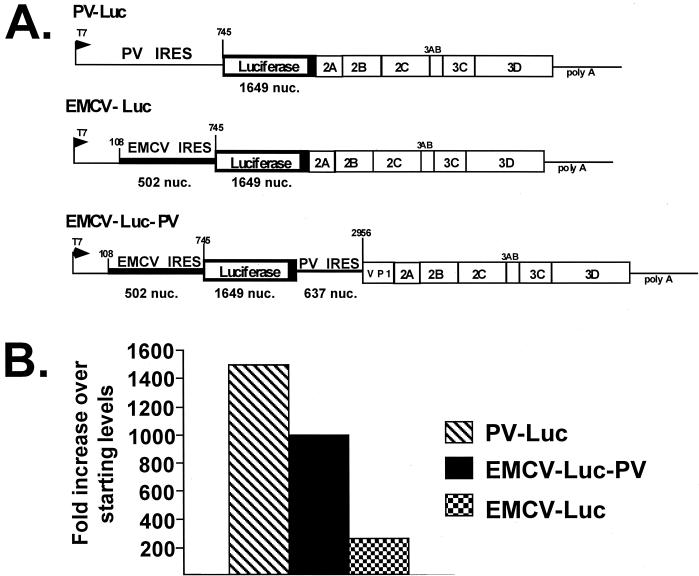FIG. 4.
Encapsidation of the dicistronic EMCV-Luc-PV compared with that of monocistronic replicons. (A) Schematic of the three replicons used to compare encapsidation efficiency. Encapsidated dicistronic replicon EMCV-Luc-PV was obtained from serial passage in the presence of VV-P1 at 33°C. Two additional monocistronic encapsidated replicons were also used; PV-Luc encodes the luciferase gene substituted for the P1 gene of PV, and EMCV-Luc contains the first 108 nucleotides (nuc.) of the PV 5′NTR fused with the EMCV IRES followed by the luciferase gene. Both monocistronic replicons were encapsidated and propagated at 33°C. (B) The passages were initiated using replicons at approximately 0.5 infectious unit per cell. Luciferase activity was determined and designated pass 1. Three additional serial passages of the replicons were performed under identical conditions. Equal amounts of each passage were used to infect cells, and luciferase activity was determined. The fold increase in luciferase expression over starting amounts was determined for each replicon.

